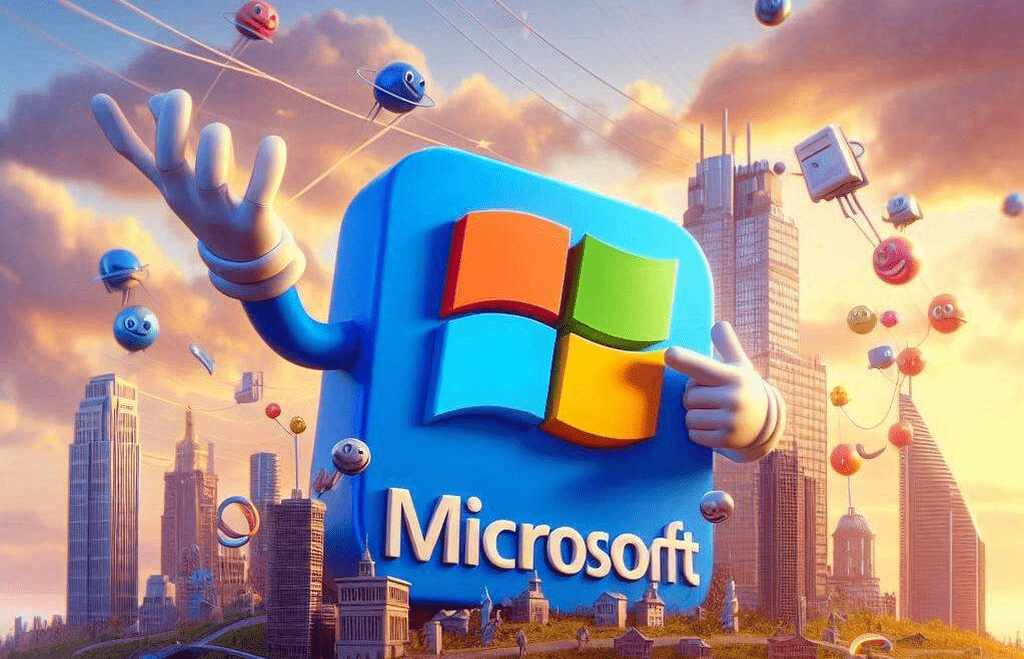Introduction
-
- The Birth of MSN: Discuss the origins and founding of MSN (Microsoft Network), highlighting its inception and early purpose.
- Significance of MSN in the Internet Age: Explore MSN’s importance during the emergence and growth of the internet, its role in connecting users globally, and its impact on digital communication.
Early Days of MSN
-
- Microsoft’s Entry into the Online Services: Describe Microsoft’s decision to enter the online services sector, setting the stage for MSN’s development.
- Launch of MSN.com: Detail the launch of MSN.com as Microsoft’s primary web portal, its initial features, and the services offered.
- Key Features and Services Offered: Highlight the key features that distinguished MSN.com from other early web portals, such as news aggregation, email services, and community forums.
- Microsoft’s Entry into the Online Services: Describe Microsoft’s decision to enter the online services sector, setting the stage for MSN’s development.
MSN’s Role in Shaping the Internet
-
- Expansion Beyond Web Portal: Explain how Microsoft Network evolved beyond a basic web portal into a multifaceted platform offering integrated services.
- Integration of Email and Messaging Services: Discuss Microsoft Network’s integration of email (Hotmail) and messaging services (MSN Messenger), enhancing user engagement and utility.
- Influence on Online Communities: Explore Microsoft Network’s impact on the formation and growth of online communities, fostering digital interactions and social connections.
- Expansion Beyond Web Portal: Explain how Microsoft Network evolved beyond a basic web portal into a multifaceted platform offering integrated services.
MSN Messenger: The Communication Revolution
-
- Emergence of MSN Messenger: Detail the launch and evolution of MSN Messenger as a pioneering instant messaging platform.
- Impact on Personal and Professional Communication: Discuss how Microsoft Network Messenger revolutionized communication by enabling real-time text, voice, and video conversations.
- Features and Innovations: Highlight the features and innovations introduced in Microsoft Network Messenger that set it apart from traditional communication methods.
- Emergence of MSN Messenger: Detail the launch and evolution of MSN Messenger as a pioneering instant messaging platform.
MSN’s Transition and Integration
-
- Integration with Windows Live: Describe MSN’s transition into Windows Live services and the consolidation of its various offerings.
- Evolution into Windows Live Messenger: Explain the rebranding and integration of Microsoft Network Messenger into Windows Live Messenger, reflecting changing technological trends and user preferences.
- Strategic Shifts and User Adaptation: Discuss Microsoft’s strategic shifts in positioning Microsoft Network within its broader product ecosystem and how users adapted to these changes.
- Integration with Windows Live: Describe MSN’s transition into Windows Live services and the consolidation of its various offerings.
Challenges and Competition
-
- Rise of Competitors: Analyze the competitive landscape faced by MSN with the emergence of rivals such as Google and Yahoo.
- Impact of Google and Yahoo: Evaluate how competitors’ innovations and market strategies challenged M’SN’s dominance in online services and communication.
- Strategies to Maintain Relevance: Discuss M’SN’s strategies to maintain relevance amidst fierce competition, including product diversification and user experience enhancements.
- Rise of Competitors: Analyze the competitive landscape faced by MSN with the emergence of rivals such as Google and Yahoo.
The Decline and Legacy of MSN
-
- Shift in Consumer Behavior: Explore the factors contributing to MSN’s decline in popularity, including shifts in consumer preferences and technological advancements.
- Microsoft’s Strategic Realignment: Explain Microsoft’s strategic decisions regarding the future of Microsoft Network services and its focus on other core products.
- Legacy in Online Services and Communication Tools: Reflect on Microsoft Network’s enduring legacy in pioneering online services and communication tools, influencing subsequent generations of internet platforms.
- Shift in Consumer Behavior: Explore the factors contributing to MSN’s decline in popularity, including shifts in consumer preferences and technological advancements.
Revival Attempts and Modern-day Relevance
-
- Contemporary Integration in Microsoft Products: Discuss how M’SN’s features and functionalities are integrated into modern Microsoft products and services.
- MSN.com Today: Provide an overview of MSN.com’s current role as a content aggregator and personalized homepage for users.
- Relevance in the Age of Social Media: Evaluate Microsoft Network’s relevance in today’s digital landscape dominated by social media platforms and mobile applications.
- Contemporary Integration in Microsoft Products: Discuss how M’SN’s features and functionalities are integrated into modern Microsoft products and services.
Conclusion
-
- MSN: A Trailblazer in Internet History: Summarize Microsoft Network’s role as a trailblazer in internet history, highlighting its contributions to digital communication and online services.
- Enduring Legacy and Future Prospects: Reflect on Microsoft Network’s enduring legacy and potential future prospects within the evolving technology and communication sectors.
FAQs About MSN
1. What does MSN stand for? MSN originally stood for Microsoft Network, reflecting its early origins as an online service provider by Microsoft.
2. Is Microsoft Network Messenger still available? No, Microsoft Network Messenger was discontinued in 2013 and merged into Skype by Microsoft.
3. How did Microsoft Network contribute to the development of the internet? Microsoft Network played a crucial role in popularizing web portals, email services, and instant messaging, shaping the Internet as we know it today.
4. What is the current role of M’SN.com? Today, M’SN.com serves as a customizable homepage offering news, weather, entertainment, and other content aggregated from various sources.
5. Can I still access Microsoft Network services? While the original Microsoft Network services have evolved or been discontinued, Microsoft integrates its features into other products like Outlook and Bing.



